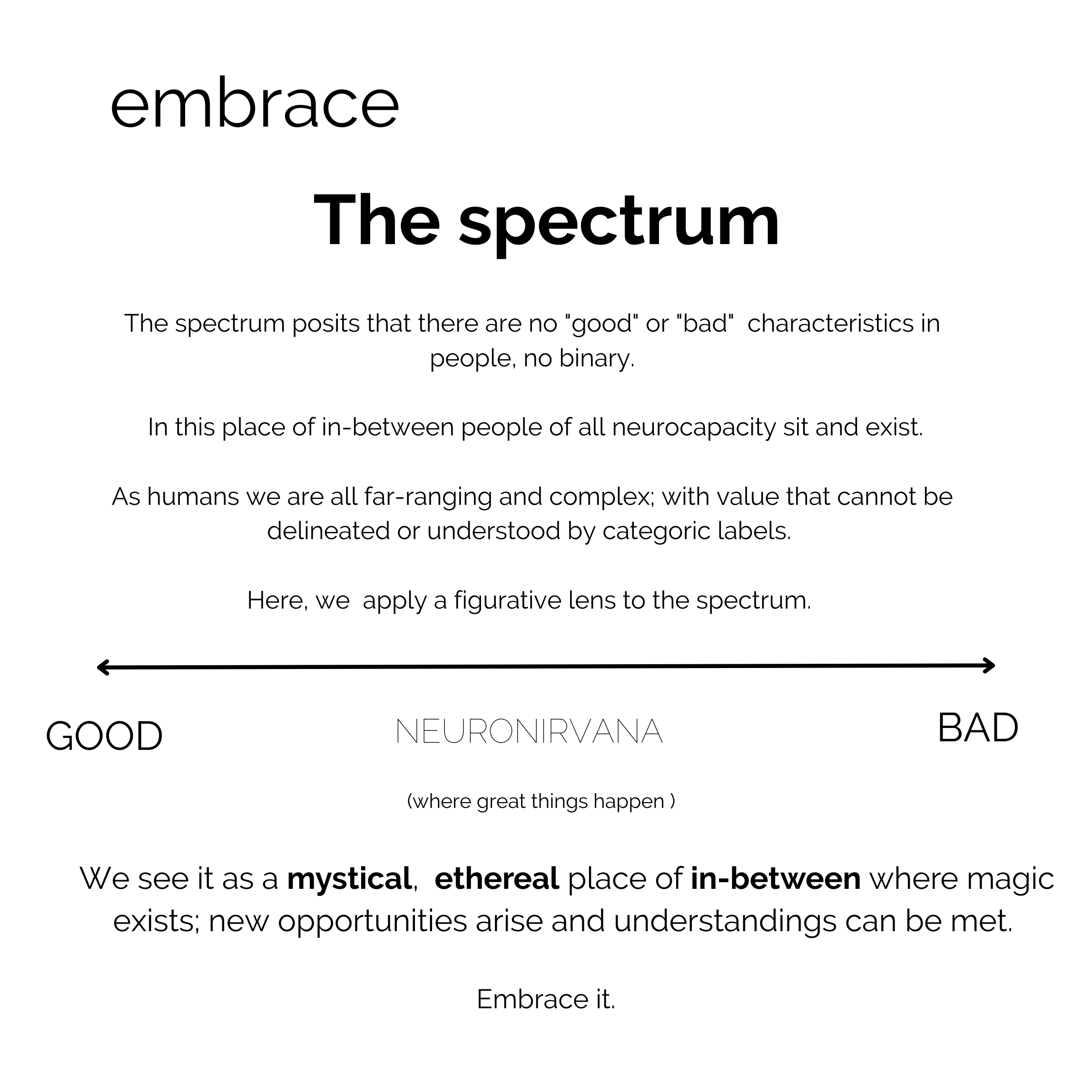
Supporting Neurodiversity in the Workplace (Part 1)
Neurodiversity.
It’s a relatively new term that we’re seeing more frequently in our own sphere, but what does it really mean? And why is it relevant you and your own workplace?
In our realm that is constantly shifting and flexing; with new paradigms always quick to tell you what “you should be doing”, how to increase profit or work more optimised it’s likely you’ve heard of the term before. But overwhelmed and slightly boggled with all the facts, it’s difficult for one know how to proceed.
Fret not! In this two-part article series, I tackle all things “neurodiversity”; what it is, issues surrounding definition and finally, how to support and nourish it in your own workplace.
But why two-parts, you ask?
Couldn’t you simply offer the answer in one single article, in a list of easy to manage tactics? Yes.
Is that simply not a clever and convenient way to disguise an inability to adhere within word limits? Also, yes.
But before you skip past this in search of the fleshy source, the hard answers consider this; embracing neurodiversity is no “simple task”.

Recognise neurodiversity is complex.
It is a term so complex, so multi-faceted that it cannot be reduced or simplified in one short article. There is no single panacea, no easy to install software program or bullet-pointed Keynote offering a solution. If you are serious about promoting positive reform in your own workplace, I suggest you take the small moment to read it all; from top to toe.
And whilst in my own research I have come across articles that promise to give you the answers in this, I have found them all dangerously reductive (more on this later).
Embracing and supporting neurodiversity in your workplace will take time, take openness and conscious effort, but will bring undoubted benefit to your employers.
I posit tackling a goal like this necessitates a two-prong approach.
Like a two-part Tarantino film or sandwich cut in half by mum, I think things are better understood in twos.
Part 1: Understanding Neurodiversity: an inward approach
What is it? other definitions around it
Part 2: Neurodiversity in the workplace
Here, I offer practical approaches and tactics to embracing neurodiversity within your own thinking template and workplace,
In Part 2 I give the answers you seek; how to approach neurodiversity and create an inclusive culture within your workplace. So, let’s get into it.
Part 1: Understanding Neurodiversity; Our current sphere.
We come from a world that seeks to be clearly understood, efficient and clear-cut; and yet paradoxically, in our very efforts to be this may appear to many a little bit strange.
Relentless in our quest to be bigger, faster, more optimised; we view the things through a categorical lens. Success is measured in metrics, numbers, KPI’s. We speak in an acronymic pseudo-dialect of charts, codes, and numbers. Employers exist as a watered-down version of themselves; they discard their idiosyncrasies and quirks, along with coat and hat at the office door.
It’s been a method of operating that up until now has served us seemingly well. It’s made us bigger, faster, more optimised, yet in our efforts to become such inhuman, unrecognisable, we have failed to see the nuance.
Where do we as humans, eclectic, coloured and increasingly complex fit in this increasingly binary realm?
Look out beyond the office cubicle desk and you’ll begin to see this method of operating has been congruent to every other industry.
But things are fast evolving.
A societal movement towards diversity
Diversity. It’s long been a buzz word flitting and dancing around our sphere like a Ping-Pong desk on a Friday afternoon. Over the years, we’ve been encouraged and taught of how to embrace to appreciate the varying and far-reaching hues it can come in. We appreciate differences in the individual, in culture, sexuality, gender, physicality and now, even in ways in which we cannot see.
Neurodiversity. What is it?
Described as a range of differences in brain function and behavioural trains, neurodiversity recognises the nuances people may exhibit in their cognitive capacity; how different brains analyse and process information differently.
What does it mean to be neurologically diverse?
People who are labelled as neurologically diverse struggle to fit within the typical templates and moulds ascribed by society. As such, they may be lacking in certain areas that we assume to be instinctive yet carry disproportionate ability in other areas.
Neurologically diverse people can be as those diagnosed with ADHD, Autism, Dyslexia, Dyspraxia.
Why does it matter?
Neurologically diverse individuals exhibit behaviours that deviate from the established practices that govern our corporate world, making it likely you’ve come across someone who is neurodivergent and overlooked, misjudged, or miscommunicated with them.
Common traits exhibited by neurodivergent people
- High impulsivity
- Difficulty concentrating
- Low social ability
- Sensory sensitivity
Above , I have listed a few traits and characteristics commonly seem amongst neurodivergent individuals.
How do they make you feel?
What’s your first instinctive reaction?
Many might tend to view these as initially problematic; after one quick scan, you may feel the all-too-familiar rivulets of sweat gather at your forehead, the rising pulse. Perhaps these characteristics may even trigger a past memory or remind you of someone in your own personal life.
Whilst these are all typically features we would associate with a “bad employee”, deemed initially problematic, what if I were to tell you that this may not need to be the case?
What if we were to eradicate this notion of “problem” in its entirety?
Indeed, As we towards a more inclusive global movement that embraces diversity in all its hues; we must recognise the need to adopt a more lateral approach to the way we view people, to see that value can come in many varied forms. We recognise too that in doing this, we can not only bring benefit our own workplace, but our personal life – reducing the likelihood of internal tension or conflict.
Now, more than ever there is an inherent need to for us to flex our own method of thinking and operating to support neurodiversity.
And whether you’ve stumbled across this article because you’re seeking vast reform or will choose to opt for smaller incremental methods, becoming more supportive of neurodiversity in your workplace will begin in the same place for corporations of all sizes.
It all starts inward, at the spectrum.
The spectrum
The spectrum. I’m sure a term you’ve heard before.
What is it?
It is a place where binary does not exist (a notion which at first may send that binary brain into existential hyperdrive, yet later should melt away into bliss)
A realm where people of all neurological capacity sit; that postulates people (even things) cannot be viewed through skills, taxonomies, or roles.
The spectrum celebrates the different ways people come, in their methods of thinking and operation.
I believe a neuronivarna of sorts; harmony, equilibrium, balance in your workplace is possible. But only be when we embrace this notion of the spectrum.
How do we embrace it?
More on this next week.
Now, well-versed in all things “neurodiversity”, I’ll allow the words some time to simmer on your tongues, I challenge you to embrace these terms, perhaps even use them in your next conversation.
In the next article we discuss tactical approaches for your workplace and of course, how to embrace this elusive and mystical “spectrum”.


